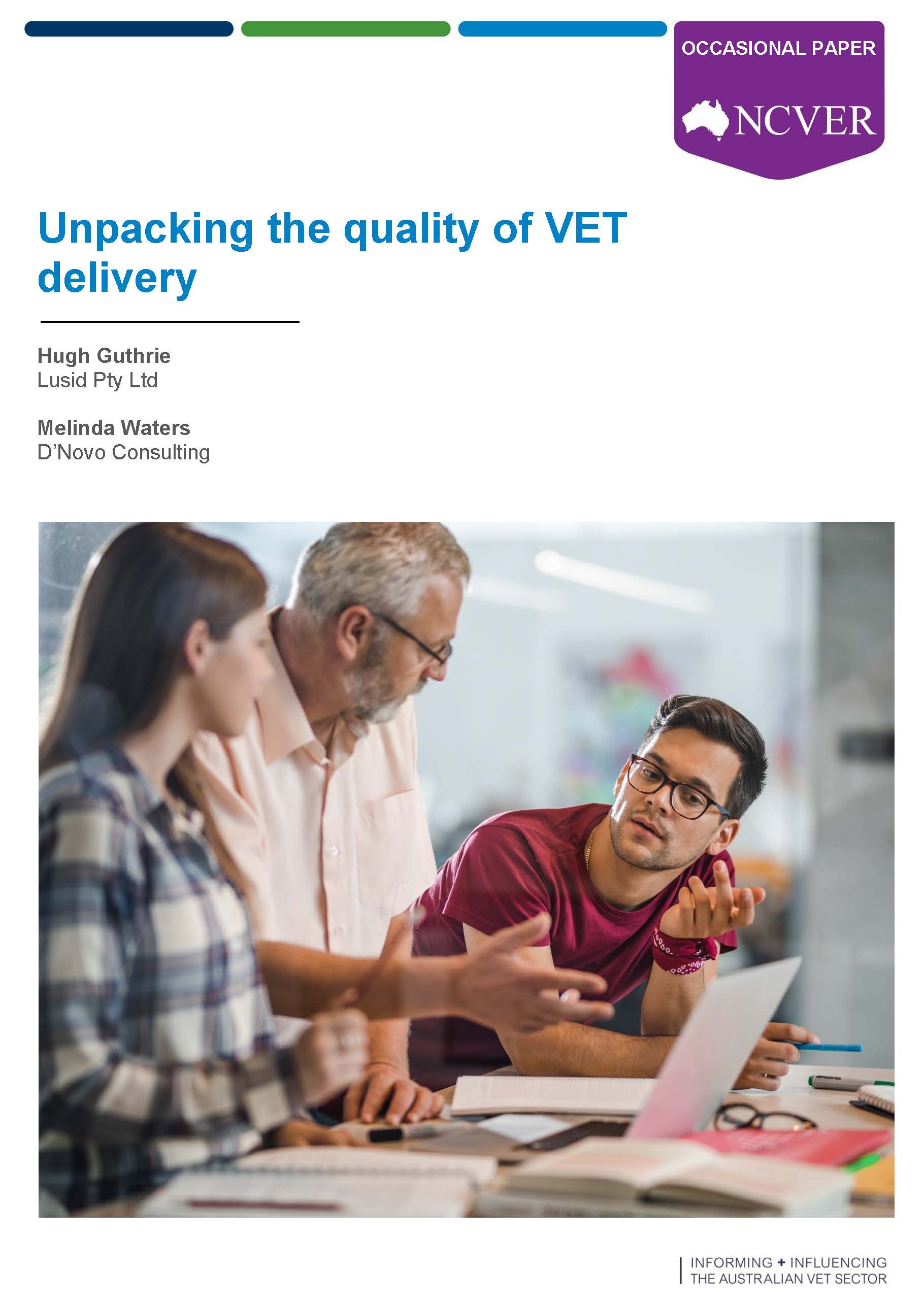Description
This paper is the first publication from a project focused on the quality of teaching, learning and assessment practices in the vocational education and training (VET) sector in Australia – what we understand these to be and how they might be measured. Based on a review of the literature, this paper explores current definitions of quality in VET, the factors that impact on the quality of delivery and the various measures used to make judgements about it.
Summary
About the research
The quality of delivery in the vocational education and training (VET) sector is critical to Australia’s social and economic prosperity, especially in the post-COVID recovery. Research shows that good-quality delivery improves outcomes for students and contributes broader benefits to employers, communities and the economy.
‘Delivery’ is a broad term, one that extends beyond teaching and learning to the whole student experience − from before enrolment, through to completion and beyond − and involves a range of educational and support services. Notions of delivery quality are further complicated by the different ways in which VET stakeholder groups view the purpose of VET delivery and by the myriad factors that impact on it within and outside registered training organisations (RTOs).
A number of measures are routinely used to evaluate the quality of delivery at national, state and VET provider levels, but there are concerns about the extent to which these measures capture the complexity and diversity of VET delivery contexts, or reflect the important aspects of delivery quality, those that make the difference for students and employers.
This paper draws on the Australian and international literature to explore how the quality of delivery is understood and applied in different contexts and to investigate how it is currently measured. It is the first product of a larger project seeking to determine the views of RTOs and educators on what good-quality delivery involves and how it might be better measured, sustained and improved. The aim is also to capture the ways by which RTOs currently gather, use and value information on the quality of their delivery, taking into account their organisational mission, student characteristics, qualification profile and operating environments.
Key messages
The literature tells us that:
- The VET sector is highly complex and diverse. Thus, what contributes to effective or good-quality delivery in different local contexts needs to be broadly conceived and requires the use of ‘fit for purpose’ delivery approaches.
- Defining quality and the quality of delivery is not simple and involves gathering and using a wide range of data and information − both quantitative and qualitative − throughout the student life cycle to develop a ‘true picture’ of quality.
- Quality measures for RTOs reflect the impact delivery has on their clients (students and employers). A balance needs to be struck, however, between meeting immediate needs and developing students’ longer-term skills, as well as the personal capabilities that will sustain them through their careers.
- The range of RTOs’ contextual factors, organisational foci and missions also means that a ‘one size fits all’ set of measures of delivery quality may not serve all purposes.
- Critical factors affecting the quality of delivery include the policy and regulatory milieu in which RTOs operate, the quality of training packages and their ability to translate them readily into training programs, the types of students they service, the availability of teachers and trainers, the quality of leadership and culture in RTOs, and the effectiveness of initial and continuing professional development in maintaining and building the quality of RTO workforces.
These issues and challenges have been identified in the literature for some time and require strategic and comprehensive interventions to shift the tenor of the quality delivery debate in VET.
Download
Related items
This study canvassed the views of stakeholders in order to identify the key features of quality teac… Show more
New research shows the definition of a ‘quality’ VET sector can vary widely by stakeholder group and… Show more
